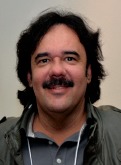
Zika virus (family Flaviviridae) is an arbovirus, initially isolated in Rhesus monkeys in the Zika forest, located in Uganda, Africa, in 1947 and transmitted by mosquitoes of the genus Aedes. Subsequently, new cases were identified in countries of Sub-Saharan Africa, French Polynesia, and Southeastern Asia, among others.
Brazil is currently the country with the highest number of infections reported by the virus, and the first reports occurred in 2014. According to data released by the Ministry of Health, 3752 cases were reported in April 2017, of which 264 were confirmed, and 2854 remained under investigation. Regarding the geographical distribution, the majority of cases occurred in the northeastern region of Brazil, with the state of Paraíba (PB) occupying the third position in a number of notifications.[1]
Microcephaly is a congenital malformation of complex and multifactorial etiology, resulting in head size smaller than normal for age and sex. In most cases of microcephaly, there is mental retardation; however, the type and severity level of sequelae may vary in each case, bringing as consequence disturbances in cognition and motor coordination.
Since microcephaly is a fairly recent condition, studies that analyze changes in the stomatognathic system are still incipient, and there is no description in the dental literature of a protocol that guides clinical care or scientific studies that reliably describe orofacial and dental alterations in these children.
The municipality of Campina Grande has a Specialized Center in Rehabilitation, which offers assistance in the Auditory, Physical, Intellectual, and Visual areas to children with special needs, including those with microcephaly. Currently, 77 children aged 5–36 months with microcephaly receive dental treatment under the supervision of professors and graduate students (PhD) of the School of Dentistry, State University of Paraíba, Brazil.
Clinically, it has been observed that these children have altered muscle tone (hypotonia or hypertonia), interfering in the sucking, swallowing, and lip-forming dynamics, thus contributing for mouth breathing.
Another condition frequently observed is that these individuals present gagging during feeding, especially with water intake, which may be an indication of dysphagia, a condition quite common in other neurological conditions. The dental professional should be permanently attentive to these episodes during dental care. In addition, it is relevant to ask parents about the presence of difficulties demonstrated by the child to breathe when feeding in the breast or bottle.
Regarding dental development, although it is still premature to affirm, some delay in the eruption of the deciduous dentition has been observed, as well as changes in the dental development sequence. With regard to signs and symptoms related to dental eruption, it is verified that many children show increased salivation, presence of irritability, among other signs. However, since many of them have epilepsy and frequent seizures, as well as mood swings, they use medications that are used continuously since early age so that some of these drugs include hypersalivation as side effects. Therefore, it is not possible to affirm that this sign, considered characteristic in children without alterations in their health status, is connected to the process of dental eruption. It should also be observed that many of these drugs have sucrose in their formulation,[2,3] causing these children to be invariably exposed to a risk factor for the development of dental caries. Another observed condition was the presence of enamel alterations, consistent with dental hypoplasia.
It was concluded that children with microcephaly need health care throughout their life due to the presence of serious neurological damage. Therefore, it is essential for the dentist to be aware of the educational and preventive needs of these patients, providing mothers/caregivers with an adequate dental care orientation in the 1st months of life regarding oral hygiene and eating habits, establishing a preventive program with regular consultations, adequate control of the dental biofilm, and rational use of fluoride, providing children and their family a better quality of life.
References
- 1.Integrated Monitoring of Changes in Growth and Development Related to Zika Virus Infection and Other Infectious Etiologies, Until Epidemiological Week 16/2017. Brazil: Secretariat of Health Surveillance, Ministry of Health; 2017. [Last accessed on 2017 Jul 14]. Available from: http://www.combateaedes.saude.gov.br/images/salade-situacao/2017-Monitoramento-alteracoes-Zika-e-outrasetiologias-infecciosas-SE16.pdf . [Google Scholar]
- 2.Xavier AFC, Abreu MHNG, Melo JBCA, Anselmo GCS, Cavalcanti AL. Changes in microhardness and morphology of the adamantine structure as a function of the exposure time to different drugs. Pesq Bras Odontoped Clin Integr. 2015;15:279–89. [Google Scholar]
- 3.Hartwig AD, Ferreira LM, Costa FS, Cademartori MG, Goettems ML, Schardosim LR. Experience of dental caries and use of continuous medication in children with neuropsychomotor disorders. Pesq Bras Odontoped Clin Integr. 2016;16:59–67. [Google Scholar]


